10 Things You Should Not Miss When Visiting The National Museum of Natural History
There’s an overwhelming amount of museums you can visit in Manila and most of them are freely accessible to public. One of the most recent attractions is the newly opened National Museum of Natural History. The museum recently celebrated its first year anniversary. Much like other National Museum buildings in Rizal Park (Check National Museum of Fine Arts and National Museum of Anthropology), National Museum of Natural History also features a neoclassical style of architecture. It was designed by Filipino Architect Antonio Toledo in the late 1930s which features the same architectural design with National Museum of Anthropology.
In 1940s, the building was constructed as the Agriculture and Commerce Building (the NM of Anthropology formerly houses the Finance. Both buildings were utterly destroyed during the Battle of Manila (Check Wartime Manila Tour). The building was also the former headquarters of the Department of Tourism until 2015.
As part of the National Museum Act, all the three historic buildings in Rizal Park were successfully converted into museums. First was the National Museum of Anthropology in 1998 followed by the National Museum of Fine Arts in 2000 while the National Museum of Natural History was inaugurated on September 2017 and was opened to public in May 18, 2018 as part of the International Museum Day celebration.

What’s inside the National Museum of Natural History
If National Museum of Fine Arts houses a huge collection of paintings and sculptures by classical Filipino artists and National Museum of Anthropology focuses on Archaeology and anthropology divisions, what does National Museum of Natural History has to offer? As what the title suggests, National Museum of Natural History houses a huge scientific collection about the natural history of the Philippines which include historical records of animals, plants, paleontology, climatology and many more.
Currently, the museum has 7 levels with 13 galleries to explore including the iconic Tree of Life foyer that welcomes the visitors. Now allow me to list down some of the things you should definitely not miss when visiting the National Museum of Natural History.

1.The Tree of Life
The first thing that will welcome you as you enter the museum is the breathtaking Tree of Life foyer. Possibly one of the most iconic attractions of the National Museum of Natural History is the photo-worthy Tree of Life! The structure covers the entire six-story building with a design inspired by DNA. It even has an elevator that you can ride to get a nice panoramic view of the building.
This is probably one of the most Instagram-worthy spots in this museum. While professional and commercial photography is not allowed inside the museum, you can still bring your phone or better yet your camera to capture every wonderful moments inside the place. Just get the right angle and the right spot and you’ll end up with a masterpiece that you can confidently share with your friends and followers. To save these precious moments, you can even create an online photobook and include your museum photos along with other share-worthy pictures.

2. The Philippine Biodiversity
The Philippines is one of the richest countries in terms of biodiversity. The country host more than 52,000 described species and half of which can only be found in our country. National Museum of Natural History houses a huge collection of animals, (both replicas and petrified) and dioramas showcasing the rich biodiversity of the Philippines. The image above features the collection of the diverse wild vertebrates in the Philippines from mammals like tamaraw to reptiles like Panay Monitor lizard as well as unique bird species like the Philippine Magpie Robin and many more.

3. Lolong
Being the world’s largest crocodile ever captured, Lolong is definitely something not to be missed when visiting the National Museum of Natural History. Lolong was caught in a Bunawan creek in the province of Agusan del Sur in the Philippines. Interestingly, the crocodile was named after Ernesto “Lolong” Goloran Cañete as one of the veteran crocodile hunters from the Palawan Crocodile and Wildlife Reservation Center, who led the hunt. Lolong is displayed in two different galleries in the Museum. One gallery displays the texidermied skin of Lolong.

While the skeleton can be seen hanging in Ayala Hall

4. The Mangroves
In Gallery IX, you’ll find a life-size diorama of a Mangrove forest. This huge installation doesn’t just recreates the Mangrove ecosystem but also educates people the importance of such trees in our environment for us and for the animals that use mangroves as their main habitat. Along with the Mangrove trees replicas, you’ll also find various texidermied species that are commonly found in such environment.

On the same gallery, you’ll also find all sea creatures of the so-called intertidal zone
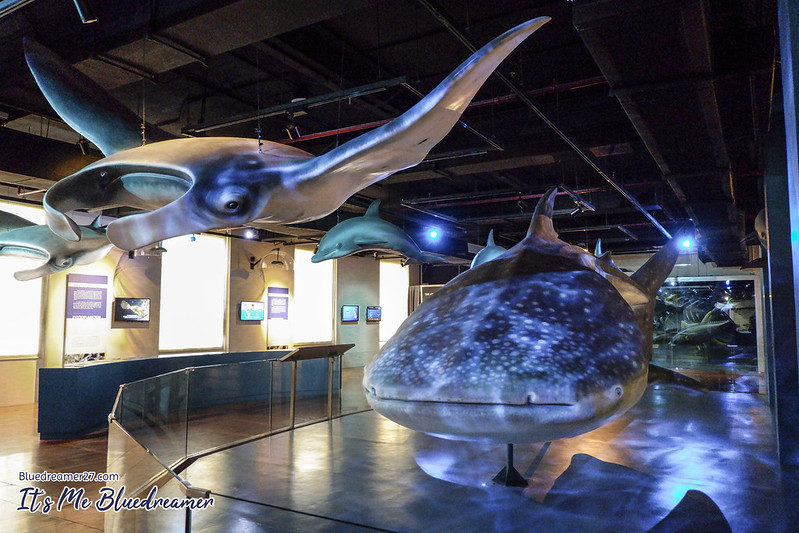
5. The Marine Realm
If you find the underwater world fascinating, this gallery is surely a great fit. Located on the same floor with the Mangrove Gallery is the so-called Marine Realm. This gallery allows you to explore the deep ocean and get a chance to witness some life-size replica of some of the Philippine sea creatures including the well known Whale Shark or Butanding. There’s also a replica of Manta Rays and Dolphins on display.
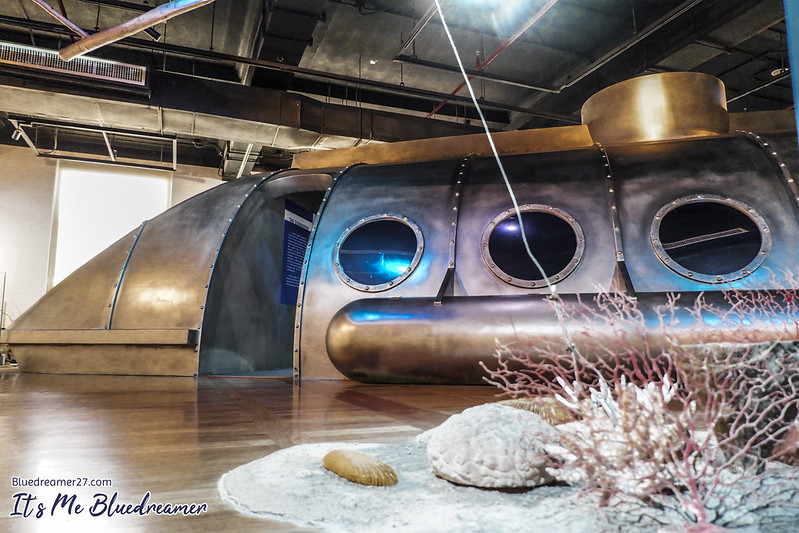
The gallery also allows you to experience how it feels like riding a submarine.

6. Ultramafic and Limestone Karst Forest
The Gallery VII houses mini replicas showcasing the ultramafic and limestone karst forests in the country. The image above is a replica of the Limestone Karst Forest in Quezon Protected Landscape which can be found in between Pagbilao and Atimonan.
 The gallery also features a replica of a cave filled with limestones, stalagmites and stalactites as well as the animals that can be found in such environment.
The gallery also features a replica of a cave filled with limestones, stalagmites and stalactites as well as the animals that can be found in such environment.
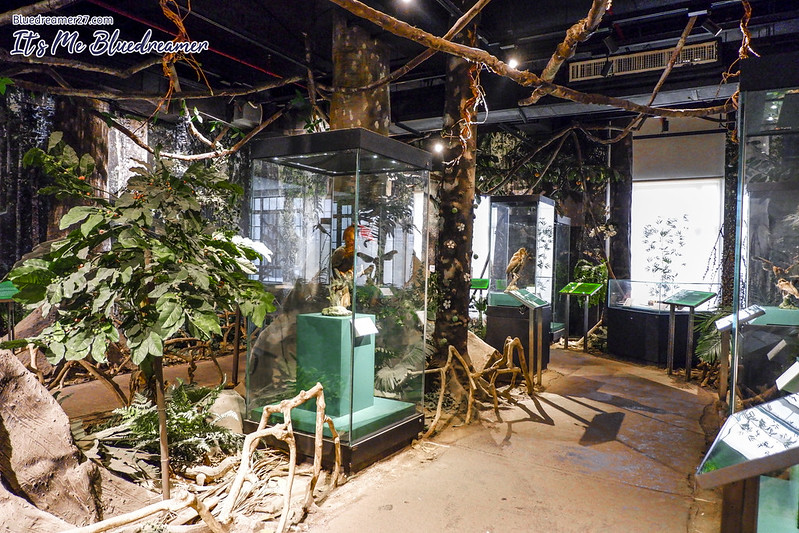
7. The Rainforest
Another interesting gallery on the fourth floor is the Gallery VI featuring the Lowland Evergreen Rainforest. Much like the Mangroves replica, this gallery will feature life size representations of different plants and animals that you can find on Philippine rainforest. The installation is even accompanied by realistic sounds.
 Philippine Hornbill
Philippine Hornbill
 Some field paraphernalia for terrestrial expeditions
Some field paraphernalia for terrestrial expeditions

8. The Philippine Eagle
What’s National history of the Philippines without the country’s national bird? This texidermied Philippine Eagle is indeed a sight to behold. The gallery will not just display information about the Philippine eagle but also raises awareness about this critically endangered animal.

9. Minerals and Energy Resources
On the uppermost gallery, you’ll find another interesting display. You’ll find some life-size replicas depicting different mining procedures, Philippine geology and life through time.

An intricately detailed diorama of a Geothermal power plant

A life-size diorama featuring how Underground mining looks like

10. Petrified Woods
Located in Natural Inheritance Gallery (Level 2) is a huge collection of Petrified woods from all over the world. Of course, it includes our very own species of trees. The collection of wood comes in different sizes.
These are just ten of the things you should not miss but the museum has so many things to offer and there are so many things to explore. Here are some stills.
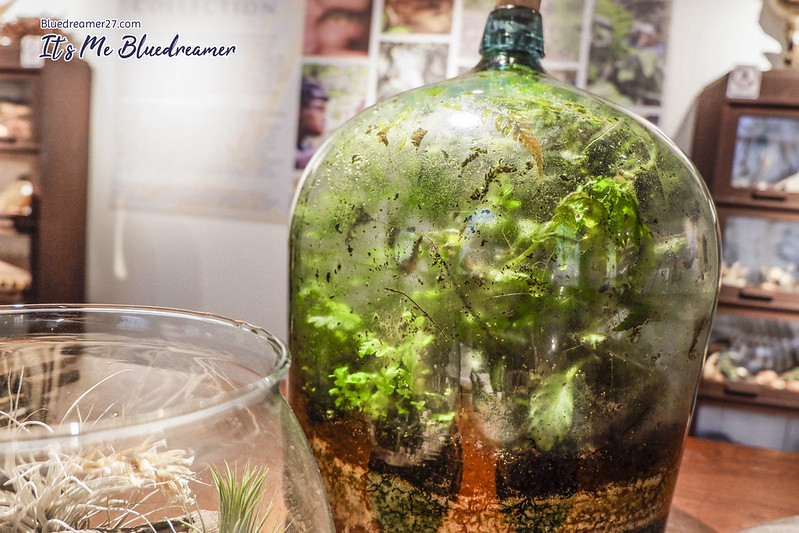
Wardian case
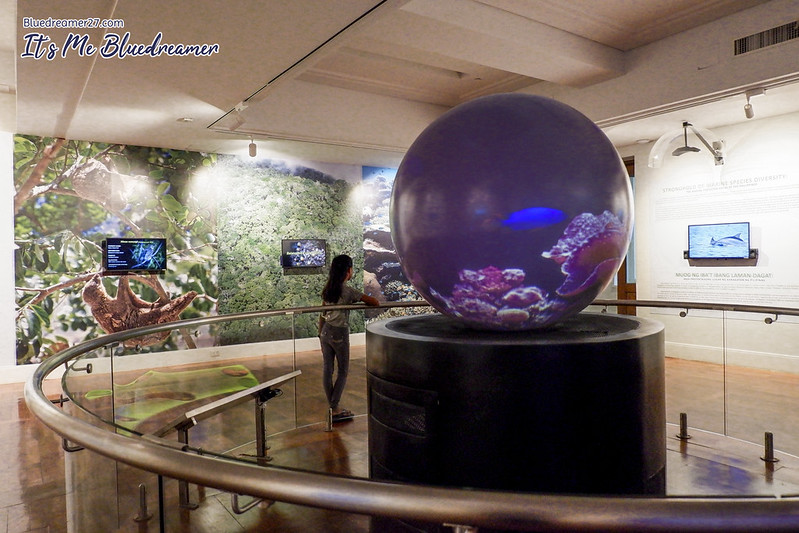
Stronghold of Marine species Diversity

Skeleton of a wild pig

Emperor Nautilus

Geology
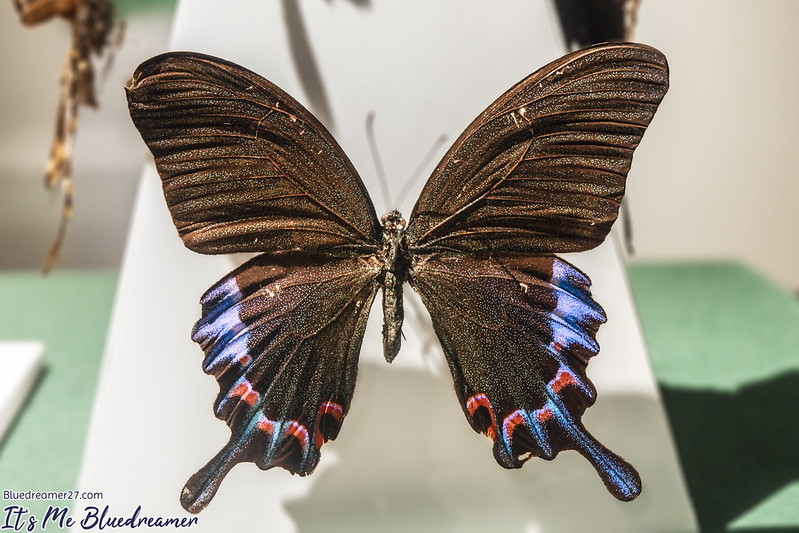
Specie of a Butterfly

Products of the forest
 Food Chain
Food Chain


Stalagmite
Things you should know before visiting the museum
►There is NO Entrance Fee in National Museum of Natural History
►The Museum is open from Tuesdays to Sundays from 10am to 5pm
You might also interested reading these articles:


Pingback: A Detailed Tour of National Museum of Fine Arts: Important Artworks and Galleries You Should Not Miss - It's Me Bluedreamer!
Pingback: 11 Eerie Artworks in National Museum of Fine Arts That You Should See - It's Me Bluedreamer!